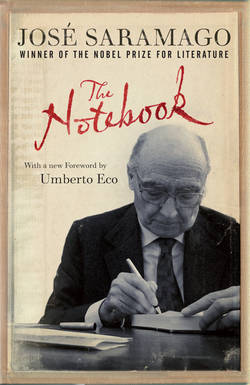Читать книгу The Notebook - José Saramago - Страница 31
На сайте Литреса книга снята с продажи.
October 15: Carlos Fuentes
ОглавлениеCarlos Fuentes, who created the expression “La Mancha territory,” a happy formula that came to express the diversity and complexity of the existential cultural experiences that connect the Iberian Peninsula with South America, has just received the Don Quixote Prize in Toledo. What follows is my tribute to the writer, to the man, and to the friend.
The first Carlos Fuentes book I read was Aura. Although I have not returned to it, I have retained to this day (and more than forty years have gone by) the impression of having penetrated a world unlike anything I had known before, with an atmosphere composed of realist objectivity and mysterious magic, and that these opposites—which after all are not as opposed as they seem—merged to captivate the reader’s spirit in a wholly unique way. Few of my encounters with books have left me with such an intense and lasting recollection.
That was not a time when American literatures (I am referring to South America) enjoyed the special favor of the learned public. Having been fascinated for generations by the French lumières, which today have faded, we watched with a certain carelessness (the feigned carelessness of ignorance that suffers from having to recognize itself as such) what was going on below the Rio Grande, a movement that, just to aggravate the situation, might have been traveling with relative freedom to Spain but barely paused in Portugal. There were lacunae, books that simply never appeared in the bookshops, and the distressing lack of competent criticism that could help us to find among the little that was being placed within our reach the excellent things at which those literatures, often fighting against similar odds, kept persistently working away. Deep down, there might have been another explanation: the books traveled little, but we traveled even less ourselves.
My first trip to Mexico was to Morelia, where I participated in a congress on the chronicle as a literary form. I didn’t then have time to visit bookshops, but I had already begun to peruse assiduously the work of Carlos Fuentes, reading key works such as La region más transparente [published in English as Where the Air Is Clear] and The Death of Artemio Cruz. It became clear to me that this was a writer of the highest artistic standard and of a rare conceptual richness. Later there was another extraordinary novel, Terra Nostra, which opened new perspectives for me, and I need not mention any further titles here (with the exception of The Buried Mirror, a key work indispensable to any sensitive and aware understanding of South America, as I have always preferred to call it) to affirm that from then on I saw myself definitively as an admiring devotee of the author of The Old Gringo. I knew the writer; I had yet to meet the man.
Now for a confession. Personally I am not easily intimidated, quite the contrary, but my first encounters with Carlos Fuentes, which of course were always polite, as one would have expected of two well-brought-up people, were not easy, not through any fault of his but because of a kind of resistance on my part to accepting naturally something which in Carlos Fuentes is extremely natural—that is, his style of dress. We all know that Fuentes dresses well, with elegance and good taste, his shirt never wrinkled, but for some mysterious reason I thought that a writer, especially one from that part of the world, should not dress in that way. My mistake. Carlos Fuentes managed to make the greatest critical demands and the greatest ethical rigor—both of which he has—compatible with a well-chosen tie. Believe me, that’s no small thing.
